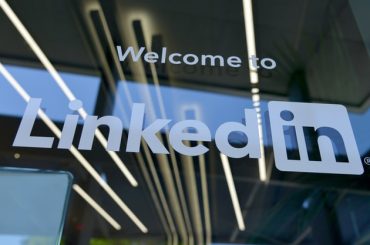“Once upon a time” or the phrase “A long time ago” still evokes special memories of childhood when my grandmother would sit us cousins down after an early dinner and transport us to another world with dexterous verbal strokes that transmuted into moving, graphic stories. I can vividly recall some of those stories even now, and I am sure most of you must have gone through similar sessions too.
Stories have always fascinated humans. The earliest stories of our times were passed on through word of mouth long before they were written and captured between the pages of a book for posterity. How else would we familiarise ourselves with the epic stories from The Mahabharata, The Ramayana, or The Bible?
Every culture had stories that were passed on orally for generations. The integrity of these stories is not the moot point here. What is essential is how stories affect us, remain in our memory, and influence our thinking to a considerable extent.
In his book “Sapiens,” Yuval Harari summarises the whole experience by saying, “Ever since the Cognitive Revolution, Sapiens have been living in a dual reality. On the one hand, the objective reality of rivers, trees, and lions is the imagined reality of gods, nations, and corporations. As time went by, the imagined reality became ever more powerful.” Thus the allure that stories cast on humans is innate, and its stimulus goes on to shape many of our thoughts.
When a legion of brands riding various media vehicles pound out myriad messages, it is not only noisy but exhausting. Many of us struggle to retain these messages amidst this cacophony. Thus, in the clamor of voices that everyone is subjected to, it is only natural that every brand wants better engagement with their customer to win their loyalty. It is, therefore, not surprising that Business Storytelling or Brand Storytelling is emerging as the most potent weapon and a war strategy in the arsenal of corporates today.
The Sea of Sameness
A few years back, the WHAT (features) of brands were used by marketers to attract customers. The commonly held belief was that additional features equated to increased reasons for customers to purchase the product. If the features were indistinguishable and not unique to the brand, it became a commodity.
Communicating the Brand USP became the new mantra in a multi-brand economy, where brands were becoming increasingly faceless. A visit to a local supermarket or a walk across a shopping aisle will demonstrate this. To stand out from the sea of sameness, brands try multiple experiments with communications, promotions, point-of-purchase displays, and many other things.
However, when WHAT becomes indistinguishable, WHY becomes the single biggest reason for a customer to buy the brand.
Facts tell, but stories sell– Brand’s Storytelling Strategy
Brand storytelling is a strategy to form a narrative, in alignment with its vision and mission, to engage with the existing and prospective audience. Depending on how powerful the story is, the audience starts to see brands as a medium that can positively impact their lives (ignoring the fact that most brands are there to make only money).
“Why does a brand do what it does” Why does a company or a brand exist beyond making profits? Simon Sinek asks all this and more when he explains the Golden Circle. Leading brands have realized that they need to have a “purpose for which they exist,” and a discerning customer will continue to buy into the brand if his value systems match that of the brand. The Raison d’etre of some of the leading brands are as follows.
Dove has a vision of a world where beauty is the source of confidence, not anxiety. Their purpose is to ensure that the next generation grows up enjoying a positive relationship with the way they look. Dove has taught young girls to be comfortable with their bodies and not succumb to trolling body shaming.
Dove: The Rise of a Purpose Led Brand
Tesla’s mission is to accelerate the world’s transition to sustainable transport. The WHY of the company drives the people who work for Tesla, and their customers flock to buy into what drives Tesla – A cleaner, greener, and sustainable future.
Nike says if you have a body, you can be an athlete. Nike encourages you to “just do it” in their contribution to a healthier world, and it does not matter even if you are differently-abled.
Nike doesn’t sell shoes. It sells an idea with its marketing strategy!!
All these top brands grow exponentially year on year, make huge profits, and have a loyal customer base who go forth every day to convert others zealously.
Marketing is no longer about the stuff that you make, but about the stories you tell.
Seth Godin, American author, businessman, marketer, and public speaker
Higher purpose
Storytelling strategy enables communicating brand purpose in a manner that appeals to the emotional side of the customer. This forms the brands’ basis of communication and takes on different avatars across different mediums.
The stories may change, but the purpose does not. These brands have loyal customers, and they, in turn, become tribes or communities of ambassadors carrying the brand story to many.
Disney’s journey to becoming the World’s greatest storyteller
Every marketer acknowledges that word of mouth has proven to be the most successful brand endorsement. The stories that customers recount contribute to the fan following.
Storytelling goes beyond brands; even a start-up looking for funds from a VC has to go beyond spreadsheet projections and business plans.
They have to concretize dreams by narrating stories that spew passion, zeal, and humanness and go beyond mere numbers, and it is these stories that win them capital.
How do brands compete and win in the Sea of Sameness amidst all this noise and clutter?
Clear brand purpose translated through storytelling seems to be a common phenomenon across these super brands. Customers are at the focus of these stories, never the brand. Therefore, it is crucial to establish an emotional connection between the brand and the customer group.
Once the customer buys into the brand and continues to be a lifelong loyalist, it means that your storytelling has been successful and that you have connected the customer to the WHY of the brand. At that point, the price, features, and promotions cease to exist.
By the way, I still remember all the stories that my grandma told me, and I have repeated a few to my son, but I honestly can’t seem to remember what I learned by rote in school or all the features of the car that I bought recently.

















